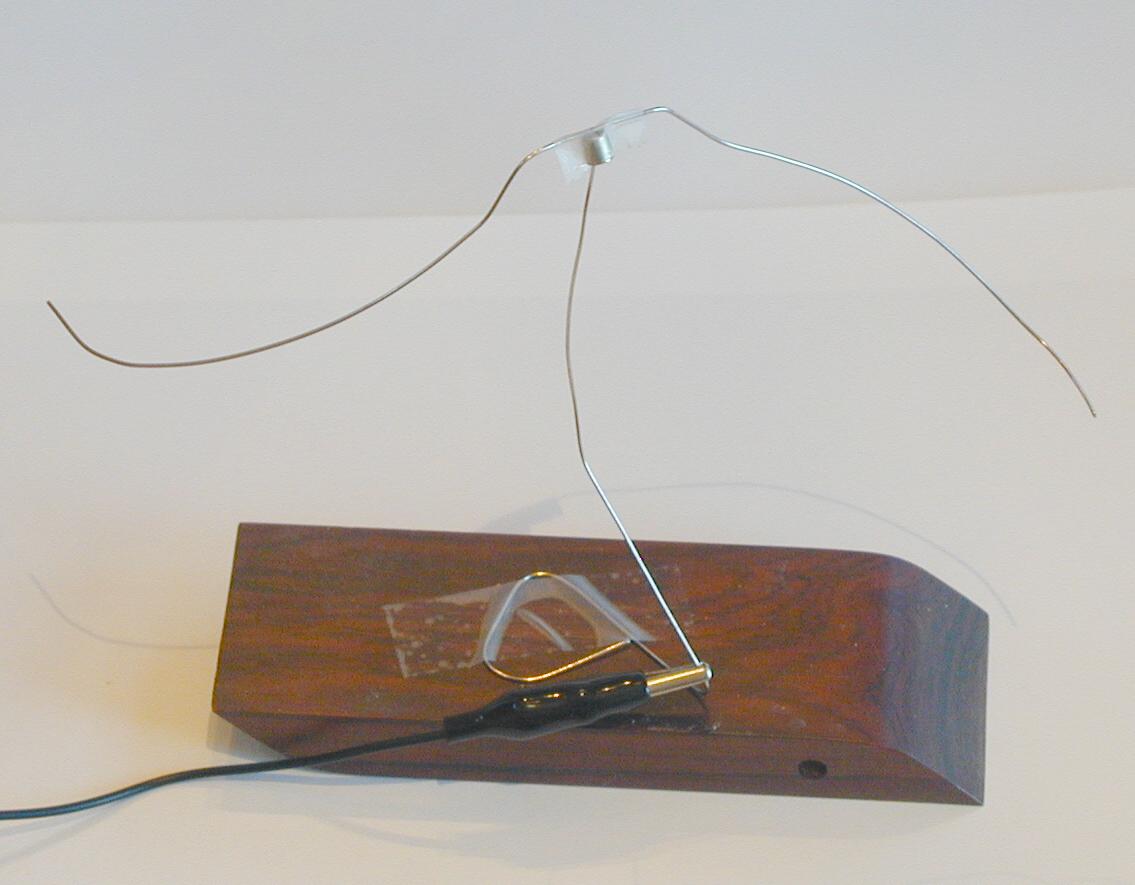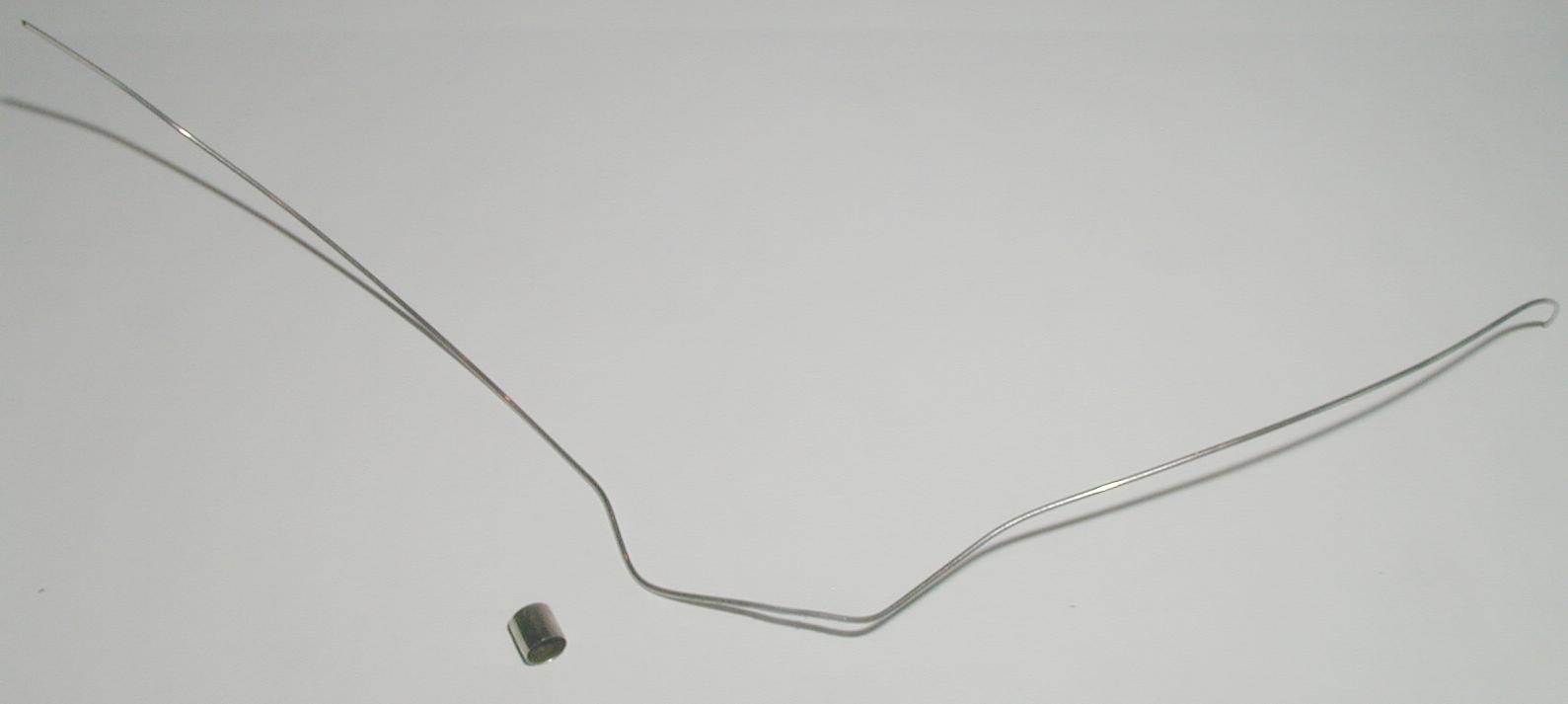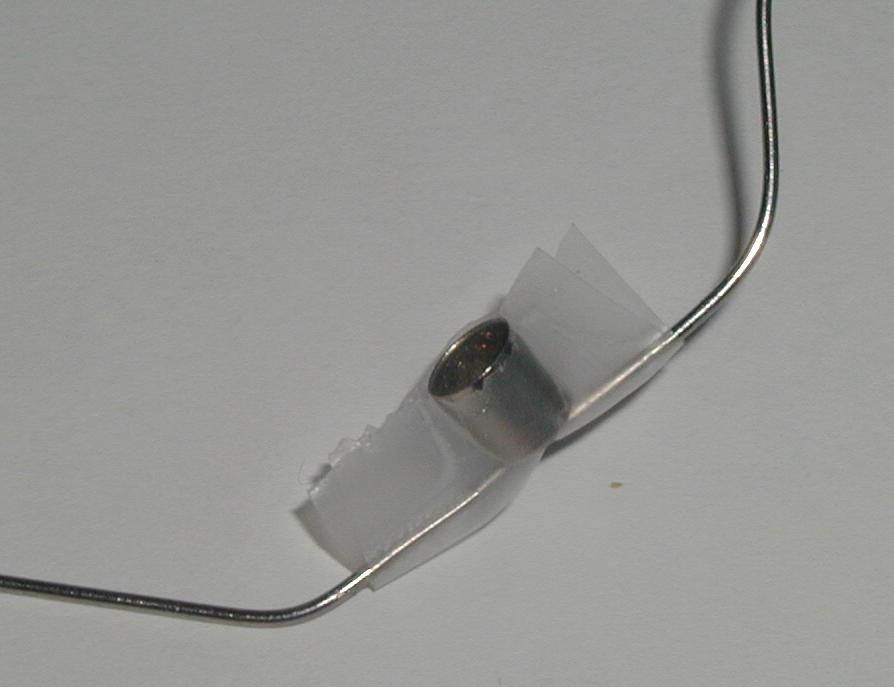This motor is very simple to build, and goes together in a few minutes. All you need is two pieces of wire, the small metal cap from the fuse we took apart in the previous project, and some cellophane tape.
The motor creates an ion wind that spins it around like a helicopter.

First, take one piece of wire (a straightened paper clip will do), and cut the end at an angle so it is sharp. Bend the other end into a rough loop or triangle, so the wire will stand up with the sharp point facing straight up. A little tape will help hold it onto the table, or a block of wood.

The armature (the part that spins) is made from the other piece of wire and the metal cap we saved when we took apart the fuse. Sharpen both ends of the wire by cutting the ends at a diagonal, like we did with the base wire. Bend the wire into an S shape. The pointed ends of the wire should point at 90 degrees from the center straight part of the wire.

Attach the metal cap to the center of the wire with tape. Place the cap onto the pointed end of the base wire, and bend the S shaped ends of the armature wire down, so it will balance easily on the sharp end of the base wire.
The armature should now spin freely if you tap it gently.
Connect a source of high voltage to the base wire using an alligator clip or a wire. The high voltage source can be the Van de Graaff generator, or just a couple square feet of aluminum foil pressed against the front of your television set, as we did in earlier projects.
As the high voltage is turned on, the armature will start to spin in the direction away from the sharp points. The Van de Graaff generator may need a good ground, or a person holding onto the ground wire. The television will give the motor a good kick every time it is turned on or off, and turning it on and off every second will get it spinning quite rapidly.
How does it do that?
The motor works by ionizing the air, and then pushing against the ionized air.
As we explained in the previous project, electric charges are concentrated by sharp points. The sharp points on the ends of the armature concentrate the charges so much that the air around the points becomes charged as well.
Since the air has the same charge as the wire, the two repel one another. You can actually feel a small wind coming from the sharp point. As the wire pushes on the charged air, they both move away from one another. The air blows away, and the wire spins.